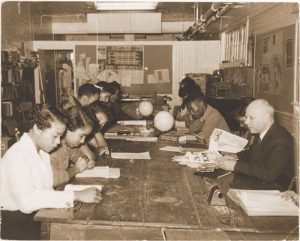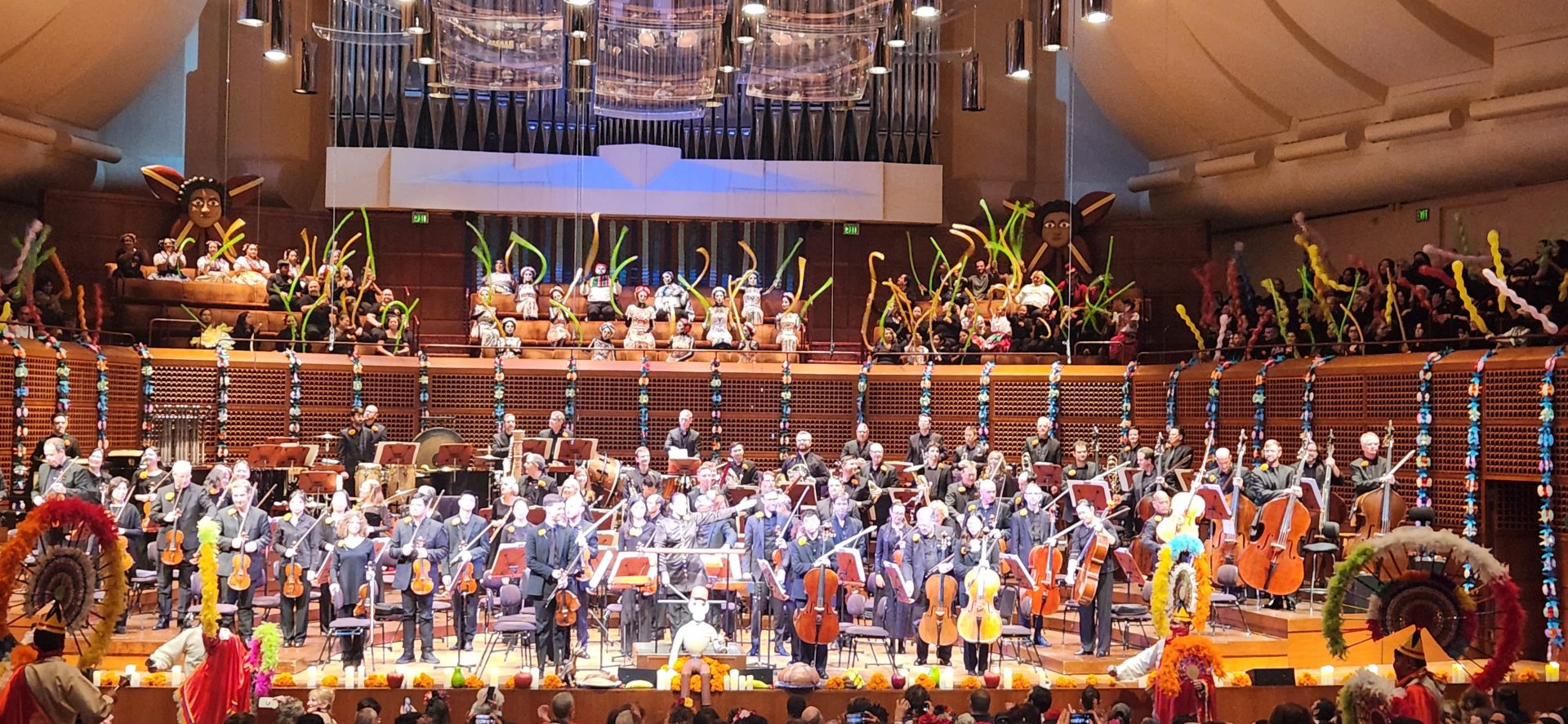A very special exhibit, “Beyond Swastika and Jim Crow: Jewish Refugee Scholars At Black Colleges” is currently on view at the National Museum of American Jewish History (NMAJH) in Philadelphia, PA through June 2, 2013. The exhibition, presented in conjunction with last February’s African American History Month annual celebration, unveils America’s Jewish and African-American communities shared history.
A very special exhibit, “Beyond Swastika and Jim Crow: Jewish Refugee Scholars At Black Colleges” is currently on view at the National Museum of American Jewish History (NMAJH) in Philadelphia, PA through June 2, 2013. The exhibition, presented in conjunction with last February’s African American History Month annual celebration, unveils America’s Jewish and African-American communities shared history of collaboration around civil rights and advocacy on behalf of minority groups.
The exhibit tells the story of Jewish academics from Germany and Austria who were dismissed from their teaching positions in the 1930s. Only months after Hitler seized power in 1933, Jewish intellectuals who had held prestigious positions in Germany’s renowned universities, where more than 12 percent of faculty members were Jewish, were targeted for expulsion. Those who dared to oppose the edicts were met with brutal suppression. Often leaving with little more than the clothes on their backs, many of these scholars fled to America, hoping to continue their academic careers.
While top academics like Albert Einstein were in demand at prestigious American universities, lesser-known professors had a much more difficult time finding teaching positions in the United States due to the fact that the country was still in a depression, with high unemployment, and a culture of xenophobia where anti-Semitism was quite prevalent. As anti-Jewish actions in Germany escalated, several organizations, including the Emergency Committee in Aid of Displaced Foreign Scholars, worked to obtain positions for the exiled scholars. Of the several hundred refugee scholars who came to this country, more than fifty of them found positions at historically black colleges.
According to the PBS documentary “Beyond Swastika and Jim Crow: Refugee Scholars at Black Colleges” much to the scholars’ surprise, many of them were welcomed into a group of colleges that the vast majority of white American professors ignored – the historically all-black colleges in the South. For the black colleges – including Howard University, Hampton Institute, Tougaloo and Talladega Colleges – the refugee professors provided the opportunity to add great talent to their faculty; for the professors, the arrangement provided a new home, a classroom of students eager to learn, and an insider’s look at an America that few ever see. While most of these pairings between Jewish refugees and Black colleges began as marriages of convenience, very often they blossomed into love matches that lasted a lifetime.
“I can’t imagine a more appropriate way to illustrate this uplifting example of the connection between the African- American and Jewish communities in this country,” says Ivy L. Barsky, Museum Director and CEO. “And it’s a story that most have never heard. As a result, the exhibition is a wonderful opportunity to build bridges in the community and collaborate with Philadelphia’s African-American Museum and other colleague organizations, and tease out the stories of courage, of leadership, and of the power of good mentoring relationships.”
The story of empathy is explored in this historic exhibition at NMAJH and it illustrates a little-known and quite remarkable story of inter-racial cooperation that took place in the 1930s at historically black colleges. This exhibition shows how Jewish refugees and African-American students navigated the challenges of life in the segregated south and supported one another as they searched for freedom and opportunity, efforts that informed and inspired the early years of the Civil Rights movement. It is a story of hope, struggle, and affirmation that many Americans may not be familiar with, a story that had a major impact on small Southern communities.

In my conversation with Josh Perelman, PhD, NMAJH’s Chief Curator and Director of Exhibitions and Collections, he stated, “This exhibition greatly expands our understanding of the relationship between American Jews and African-Americans. It illustrates the continually evolving struggle for freedom on a very human and very touching level.”
America’s Jewish and African-American communities have a shared history of collaboration around civil rights and advocacy on behalf of minority groups, but little is known about the remarkable story of inter-racial cooperation that took place in the 1930s at historically black colleges. “This exhibit also provides a wonderful opportunity to collaborate on a project that touches deeply the hearts of both communities,” said Romona Briscoe, Executive Director of the African-American History Museum of Philadelphia.
The refugee scholars who found work at black colleges were often more comfortable in the black environment than their peers at white universities who faced prejudice at their jobs. Some professors, such as Ernst Borinski and Ernst Manasse, felt a deep connection to black students, and spent the rest of their careers at the historically black colleges. Borinski was even buried on the campus of Tougaloo. His tombstone reads, “Ernst Borinski, Inspiring Teacher.”
Dr. Joyce A. Ladner, one of the students and distinguished graduates of Professor Earnst Borinski (whom the students affectionately called “Bobo”) said, “He had an affinity with blacks because they experienced a similar persecution.” Dr. Ladner, a former United States civil rights activist, author, teaching and research professor, sociologist and the key commentator on major television networks, was appointed in 1995 by President Clinton to oversee the financial restructuring of the D.C. public school system. On her return to college as a commencement speaker, Dr. Ladner visited Professor Borinski’s gravesite in Tougaloo. “I was not sad anymore, just sort off thoughtful about how strange it was that this man came to a place like this in Mississippi and certainly had such a profound impact on my life and the lives of so many of my friends and classmates.”
The mutual respect the students and professors felt for each other later resulted, in some cases, in the refugee professors getting involved in the Civil Rights movement officially or unofficially. For instance, Prof. Borinski was identified as a “race agitator” for promoting integration both on and off campus. He wanted to be a “facilitator,” to “bridge communities,” as he felt his contribution to the Civil Rights movement was to get both black and white people into a room together to share ideas. He created the Social Science Forums which hosted lectures and discussions for the community with top thinkers of the time. He would have his students from Tougaloo arrive early and scatter themselves in the room so the white participants would have to sit among the black students. In many cases, it was the first time they had had a substantive conversation or dined with someone of another ethnicity. The Mississippi branch of the American Civil Liberties Union gives out an annual award in Prof. Borinski’s name.
In addition to getting involved in campus life and the political landscape, the professors, who came from a formal and rigorous academic background, did their best to instill high standards of learning. The historically black colleges, mostly founded between the late 1860s and the 1880s, were mostly private institutions funded by philanthropists and missionary groups that focused primarily on liberal arts while a few others were public schools that offered both vocational training in agriculture, trades, and service, and the liberal arts. In both scenarios, the refugee scholars expected academic excellence from their students.
“The German Jewish professors had a tremendous impact on young blacks in the South,” said Jim McWilliams, a student at Talladega College, who is now a retired attorney. “They exposed us to new music, art, and academic programs.” Jocelyn Elders was also grateful for her education and understood the importance of it, “Grandma Minnie was constantly at me. ‘You’ve got to get an education.’ That was her refrain, like a drumbeat. ‘You want to pick cotton and live in all these mosquitoes the rest of your life?’” said Dr. Elders.
This exhibit explores in-depth what it meant to the students to have these new faculty members as part of their community, how the students were affected by their presence, and what life was like for white, European Jews teaching in predominantly black communities. The exhibit is inspired by Gabrielle Simon Edgcomb’s landmark book From Swastika to Jim Crow: Refugee Scholars at Black Colleges (Krieger Publishing Company, 1993) and the subsequent PBS documentary by Joel Sucher and Steven Fischler of Pacific Street Films. The exhibition includes more than 70 evocative artifacts and documents, photographs, and two new films, by Sucher and Fischler, featuring both the professors and the students.
Exhibition highlights include receipts for the $28 in fines Professors Lore and Donald Rasmussen of Talladega College in Alabama paid for having lunch with a black civil rights colleague at a black café in Birmingham. Eating in a public place with someone of the other race without a seven foot high separation wall was considered “incitement to riot.” Prof. Lore Rasmussen and her husband were arrested. When Prof. Lore Rasmussen was free to go, she was not allowed to ride home alone with her black student, so she stayed in jail with her husband until bail was posted for them by a black dentist.
The National Museum of American Jewish History is located on historic Independence Mall in Philadelphia. For more information about Beyond Swastika and Jim Crow: Jewish Refugee Scholars At Black Colleges, please visit www.nmajh.org.
Beyond Swastika and Jim Crow: Jewish Refugee Scholars at Black Colleges was created and is circulated by the Museum of Jewish Heritage — A Living Memorial to the Holocaust in New York City. After the exhibit in Philadelphia, it will be presented in Farmington Hills, Michigan, Aug. 4 – Dec. 1, 2013. Chicago, Illinois from Jan. 10 – Apr. 6, 2014. Visit www.mjhnyc.org for more information.
Lina Broydo immigrated from Russia, then the Soviet Union, to Israel where she was educated and got married. After working at the University in Birmingham, England she and her husband immigrated to the United States. She lives in Los Altos Hills, CA and writes about travel, art, style, entertainment, and sports.






